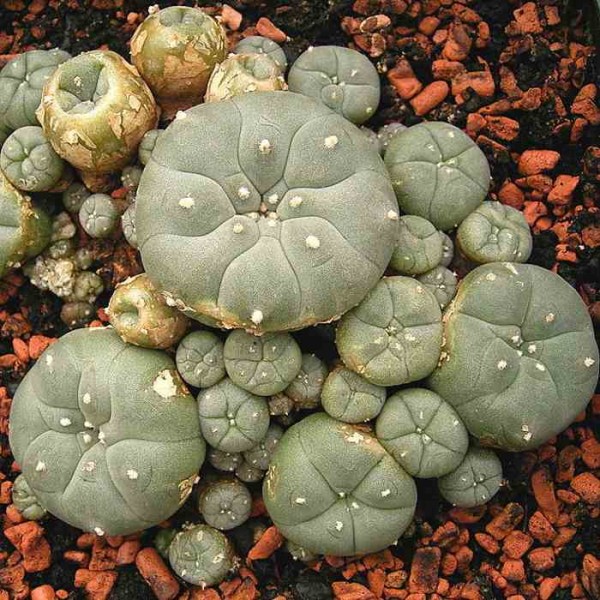When one thinks of unique flora that captivates the imagination, few plants rival the enigmatic Lophophora williamsii, commonly known as peyote. This small, spineless cactus holds storied significance in various cultures, particularly among Indigenous peoples in Mexico and the southwestern United States. However, for enthusiasts in Canada, sourcing and cultivating peyote seeds presents its own set of challenges and opportunities. This article delves into the unique appeal of peyote, where to find Lophophora williamsii seeds, and the intricacies of growing this fascinating cactus in Canadian landscapes.
One of the most distinctive characteristics of Lophophora williamsii is its unique appearance. This cactus exhibits a button-like structure, typically globular, with a vibrant green color that can shift to shades of bluish-green or gray under varying environmental conditions. Its lack of prominent spines adds to its aesthetic charm, making it a striking specimen for both collectors and gardeners alike. As it matures, the peyote can produce small, funnel-shaped flowers that bloom in shades of pink or white, further enhancing its ornamental appeal.
Beyond its visual allure, what truly sets this cactus apart is its history and the psychoactive properties associated with it. Peyote contains mescaline, a naturally occurring psychedelic compound that has been used for centuries in various spiritual and ceremonial contexts. This duality of being both a beloved ornamental plant and a hallucinogenic substance adds a layer of intrigue to Lophophora williamsii, drawing in hobbyists who appreciate its cultural significance and botanical beauty.
Finding Lophophora williamsii seeds in Canada can be a bit of a quest. While peyote is native to the arid deserts of Mexico and the southern United States, the interest in cultivating it has expanded northward. Canadian gardeners intrigued by this exceptional species can seek out reputable online seed vendors that specialize in cacti and succulents. Websites dedicated to exotic or rare seeds often list peyote seeds, enabling canny gardeners to commence their journey. However, it is paramount to verify the legitimacy of the source, as legal regulations regarding the sale of psychoactive plants vary across regions.
In addition, local horticultural societies or gardening clubs may provide insights into where to find peyote seeds. Engaging with fellow cactus enthusiasts can uncover hidden gems and trusted vendors. Moreover, participating in forums or discussion groups can yield valuable tips on cultivation and care, making the process of finding seeds more interactive and fruitful.
Once the seeds have been procured, the next step is to establish the perfect environment for growing peyote. Cultivation varies significantly in Canada, as the climate can fluctuate drastically between regions. However, the use of containers can mitigate some of these challenges, particularly for those residing in regions with shorter growing seasons. Utilizing pots or planters allows for better control over soil quality, drainage, and moisture levels, crucial factors for the survival of peyote.
Understanding soil composition is critical when cultivating Lophophora williamsii. This cactus thrives in well-draining soil with a low moisture retention capability. A mixture of cactus soil, perlite, and sand creates an ideal medium that mimics its native habitat. Adding gravel to the bottom of containers assists with drainage, preventing root rot, a potential nemesis for novice cactus growers.
Once planting commences, the need for patience cannot be overstated. Peyote seeds have a notoriously slow germination rate which ranges from several weeks to even months. Providing consistent temperatures between 21°C to 30°C (70°F to 85°F) enhances germination success. A heat mat can be a beneficial tool in cooler months, simulating the warm desert floor where peyote thrives.
Moreover, peyote plants necessitate bright, indirect sunlight for optimal growth. While direct sunlight can scorch the tender seedlings, reflected light in a warm, sunny space mimics the natural conditions of their native environment. Regular monitoring of the moisture levels is essential; allowing the soil to dry out between watering encourages healthy root growth and mitigates the risk of stem rot.
In regions where outdoor cultivation is feasible, selecting a sheltered spot that receives ample sunlight while protecting the plant from harsh winds and excessive moisture is vital. Creating a microclimate through the strategic placement of other plants can help regulate temperature and humidity, further benefiting the peyote’s development.
What makes cultivating Lophophora williamsii so rewarding is the enduring connection between the gardener and the plant. Over the years, these cacti can attain a remarkable size and develop the enchanting characteristics for which they are celebrated. The aesthetic appeal of a mature peyote— a beautiful, unique form that stands as a testament to the care and dedication of its grower— is a reward unto itself.
In conclusion, the journey of cultivating Lophophora williamsii seeds in Canada is filled with intrigue and satisfaction. From the excitement of sourcing seeds to the patience required for successful growth, this cactus encapsulates the essence of adventure in gardening. With its striking appearance and profound cultural significance, the peyote cactus not only enriches gardens but also connects individuals to the deep-rooted traditions of those who have revered it for centuries. Each plant nurtured is a celebration of nature’s beauty and resilience, inviting all who behold it to engage in the wonder it fosters.





Leave a Comment